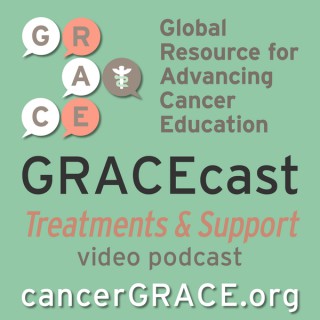Podcasts about sznol
- 8PODCASTS
- 12EPISODES
- 44mAVG DURATION
- ?INFREQUENT EPISODES
- Oct 13, 2021LATEST
POPULARITY
Best podcasts about sznol
Latest podcast episodes about sznol
El Templo de Jerusalén fue por casi un milenio el centro espiritual y cultural del pueblo judío. Tras la destrucción del primer Templo (586 a.e.c) comenzó a nacer algo que luego será conocido como Beit HaKnesset (Sinagoga - Casa de encuentro) y luego de la destrucción del segundo Templo (70 e.c.) este espacio que convivió durante siglos con el Templo "ocupó su lugar". En este apasionante episodio junto a la Dra. Shifra Sznol analizamos en qué sentido la sinagoga es una continuación del Templo y en qué sentido es una ruptura estudiando los registros arquitectónicos de las primeras sinagogas. Youtube: https://www.youtube.com/pielef Apple Podcast: https://apple.co/2McoMOo Spotify: https://spoti.fi/2MdHNQn Android Google Play: http://bit.ly/2MaGhhW Instagram: https://www.instagram.com/urielromano/ Twitter: https://twitter.com/urielromano/ Facebook: https://www.facebook.com/uriel.romano Website: https://urielromano.com/ Comentarios & Sugerencias: info@pielef.com
Really? Decadron can worsen mortality in GBMs? This week Karl and I go over the evidence showing that steroids might not be the best thing for GBM patients. Specifically, it looks like dexamethasone might interfere with the effectiveness of chemo and radiation, leading to worse outcomes. Literature Referenced: Opinion paper that summarizes the argument against using Decadron in GBM patients: Wong, E., Swanson, K. (2019). Dexamethasone—Friend or Foe for Patients With Glioblastoma? JAMA Neurology 76(3) https://dx.doi.org/10.1001/jamaneurol.2018.4530 Retrospective post-hoc comparison of Decadron dose in NovoTTF vs. best physician’s choice (BPC) chemo.Patients were dichotomized to > or < 4mg/day. Improved survival seen in low Decadron dose group. NovoTTF patients: median OS 4.8mo vs. 11.0mo, BPC chemo patients: 6.0mo vs. 8.9mo (effect seemed to be more profound in TTF group). Wong, E., Lok, E., Gautam, S., Swanson, K. (2015). Dexamethasone exerts profound immunologic interference on treatment efficacy for recurrent glioblastoma British Journal of Cancer 113(2), 232-41. https://dx.doi.org/10.1038/bjc.2015.238 A combination of 3 retrospective human patient cohorts and a mouse model of GBM looking at the correlation of Decadron with survival after RT. Also compared VEGF inhibitor in mouse model.Found worsening mortality associated with Decadron in all 3 cohorts using a multivariate model. In mouse model, Decadron made radiation therapy ineffective. VEGF inhibitors were able to control edema without worsening outcome. Pitter, K., Tamagno, I., Alikhanyan, K., Hosni-Ahmed, A., Pattwell, S., Donnola, S., Dai, C., Ozawa, T., Chang, M., Chan, T., Beal, K., Bishop, A., Barker, C., Jones, T., Hentschel, B., Gorlia, T., Schlegel, U., Stupp, R., Weller, M., Holland, E., Hambardzumyan, D. (2016). Corticosteroids compromise survival in glioblastoma Brain 139(5), 1458-1471. https://dx.doi.org/10.1093/brain/aww046 First reference in the literature I could find to this effect.Tested the effects of adding dex to human glioma cell cultures, treated with vincristine, cytarabine, methotrexate (MTX), and adriamycin. Found that decadron attenuated the effect of all tested chemo agents. Weller, M., Schmidt, C., Roth, W., Dichgans, J. (1997). Chemotherapy of human malignant glioma: Prevention of efficacy by dexamethasone? Neurology 48(6), 1704-1709. https://dx.doi.org/10.1212/wnl.48.6.1704 Developed findings from Weller (1997) to look at mechanisms. Demonstrated that dDcadron inhibits apoptosis in human astrocytoma cells in culture. Gorman, A., Hirt, U., Orrenius, S., Ceccatelli, S. (2000). Dexamethasone pre-treatment interferes with apoptotic death in glioma cells Neuroscience 96(2), 417-425. https://dx.doi.org/10.1016/s0306-4522(99)00565-5 Phase II trial testing ipilimumab for brain melanoma mets. Included two cohorts: Cohort A - asymptomatic, Cohort B - symptomatic, taking Decadron. Cohort B survived longer. Was this due to worse disease, or the Decadron treatment? Margolin, K., Ernstoff, M., Hamid, O., Lawrence, D., McDermott, D., Puzanov, I., Wolchok, J., Clark, J., Sznol, M., Logan, T., Richards, J., Michener, T., Balogh, A., Heller, K., Hodi, F. (2012). Ipilimumab in patients with melanoma and brain metastases: an open-label, phase 2 trial The Lancet Oncology 13(5), 459-465. https://dx.doi.org/10.1016/s1470-2045(12)70090-6
Derm | Interview with Mario Sznol, MD
Featuring interviews with Dr Michael A Postow, Dr Karl Lewis, Dr Mario Sznol and Prof Caroline Robert. | For more information, visit: www.researchtopractice.com/DOU119/Video
Conversations with Oncology Investigators. Bridging the Gap between Research and Patient Care. Interview with Mario Sznol, MD conducted by Neil Love, MD. Produced by Research To Practice
Dr. Mario Sznol, Yale School of Medicine, provides a detailed description of the mechanism of action of immunotherapy agents and discusses early data on the use of combination therapies.
Novel Immunotherapies and Combinations
Dr. Mario Sznol, Yale School of Medicine, provides a detailed description of the mechanism of action of immunotherapy agents and discusses early data on the use of combination therapies.
Novel Immunotherapies and Combinations
Dr. Mario Sznol, Yale School of Medicine, provides a detailed description of the mechanism of action of immunotherapy agents and discusses early data on the use of combination therapies.
Dr. Mario Sznol, Yale School of Medicine, provides an overview of melanoma and its treatment, and discusses current melanoma immunotherapies and other agents under investigation.
Dr. Mario Sznol, Yale School of Medicine, provides an overview of melanoma and its treatment, and discusses current melanoma immunotherapies and other agents under investigation.
Dr. Mario Sznol, Yale School of Medicine, provides an overview of melanoma and its treatment, and discusses current melanoma immunotherapies and other agents under investigation.
Conversations with Oncology Investigators. Bridging the Gap between Research and Patient Care. Interview with Mario Sznol, MD conducted by Neil Love, MD. Produced by Research To Practice.
Nivolumab produces long-lasting responses in patients with stage IV melanoma: Dr Mario Sznol
Dr Mario Sznol talks to ecancer at ASCO 2013 about long-term follow-up results from an expanded phase I study examining the effects of nivolumab in advanced melanoma. 107 patients were treated with five different doses of nivolumab. All patients had disease that worsened despite prior standard systemic therapies — 25 percent had three or more prior therapies and 63 percent had two or more. Overall, 33 out of 107 (31 percent) of patients experienced tumor shrinkage of at least 30 percent and responses were seen at all doses. The estimate for survival at two years was 43 percent. The median overall survival across all doses was 16.8 months; 20.3 months for the dose chosen for study in subsequent clinical trials.











